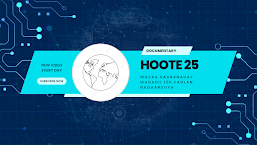## Introduction
Natural Language Processing (NLP) is a subfield of artificial intelligence (AI) that focuses on the interaction between computers and human language. Its primary goal is to enable machines to understand, interpret, and generate human-like language. NLP combines elements of linguistics, computer science, and cognitive psychology to bridge the gap between human communication and computational understanding. From chatbots and language translation to sentiment analysis and text summarization, NLP has a wide range of applications that impact various industries.
## Fundamental Concepts in Natural Language Processing
### 1. **Tokenization:**
- Tokenization is the process of breaking down a piece of text into smaller units, typically words or phrases, known as tokens. This step is crucial for subsequent analysis as it establishes the basic units for understanding and processing.
### 2. **Part-of-Speech Tagging:**
- Part-of-speech tagging involves labeling each word in a sentence with its grammatical category, such as noun, verb, adjective, etc. This information is valuable for understanding the syntactic structure of a sentence.
### 3. **Named Entity Recognition (NER):**
- NER is the identification and classification of entities, such as names of people, organizations, locations, dates, and more, within a given text. This is essential for extracting meaningful information from unstructured data.
### 4. **Stemming and Lemmatization:**
- Stemming and lemmatization are techniques used to reduce words to their base or root form. Stemming involves removing suffixes, while lemmatization considers the word's meaning and aims to reduce it to its dictionary form.
### 5. **Syntax and Parsing:**
- Syntax and parsing involve analyzing the grammatical structure of sentences. Parsing, in particular, determines the grammatical relationships between words, allowing for the creation of a parse tree that represents the syntactic structure.
### 6. **Sentiment Analysis:**
- Sentiment analysis, or opinion mining, assesses the sentiment expressed in a piece of text. It determines whether the overall tone is positive, negative, or neutral, making it valuable for understanding public opinion on various topics.
### 7. **Text Classification:**
- Text classification involves assigning predefined categories or labels to a given piece of text. This is commonly used in spam detection, topic categorization, and sentiment analysis.
## NLP Applications
### 1. **Language Translation:**
- NLP is foundational in language translation applications, allowing systems to translate text or speech from one language to another. Platforms like Google Translate leverage NLP algorithms to provide multilingual capabilities.
### 2. **Chatbots and Virtual Assistants:**
- Chatbots and virtual assistants use NLP to understand user queries, engage in natural language conversations, and provide relevant information or perform tasks. These applications are widely used in customer service, information retrieval, and automation.
### 3. **Information Extraction:**
- NLP techniques are employed for extracting structured information from unstructured text. Named Entity Recognition is a key component in this process, enabling the identification of entities and their relationships.
### 4. **Text Summarization:**
- Text summarization involves condensing large volumes of text into shorter, coherent summaries while retaining essential information. NLP algorithms analyze and prioritize content to generate concise summaries.
### 5. **Sentiment Analysis in Social Media:**
- Social media platforms use sentiment analysis to gauge public opinion on topics, products, or events. This information is valuable for businesses, marketers, and policymakers to understand and respond to public sentiment.
### 6. **Speech Recognition:**
- NLP plays a crucial role in speech recognition systems, converting spoken language into text. Virtual assistants like Siri and voice-activated devices use NLP to interpret and respond to spoken commands.
### 7. **Question-Answering Systems:**
- Question-answering systems use NLP to understand user queries and retrieve relevant information to provide accurate responses. These systems find applications in search engines, customer support, and educational platforms.
## Challenges in Natural Language Processing
### 1. **Ambiguity and Polysemy:**
- Natural language is inherently ambiguous, with words having multiple meanings depending on context. Polysemy, the phenomenon where a word has multiple meanings, poses a challenge for NLP systems to accurately interpret user intent.
### 2. **Lack of Context Understanding:**
- Understanding context, including nuances, references, and sarcasm, remains challenging for NLP systems. Contextual information is crucial for accurately interpreting and responding to user input.
### 3. **Data Limitations and Bias:**
- NLP models heavily depend on training data, and biases present in the data can be reflected in the models. Ensuring diverse and representative datasets is essential to mitigate biases and enhance model performance.
### 4. **Understanding Idioms and Colloquialisms:**
- Idiomatic expressions, colloquialisms, and slang pose challenges for NLP systems, as these linguistic nuances may not adhere to standard language rules. Understanding and interpreting informal language is
an ongoing challenge.
### 5. **Handling Rare and Out-of-Vocabulary Words:**
- NLP models may struggle with rare or out-of-vocabulary words that were not present in their training data. Techniques for handling unknown words and expanding vocabulary are areas of ongoing research.
## Recent Advances in Natural Language Processing
### 1. **Transformer Models:**
- Transformer models, such as BERT (Bidirectional Encoder Representations from Transformers) and GPT (Generative Pre-trained Transformer), have revolutionized NLP. These models leverage attention mechanisms for capturing contextual information and achieving state-of-the-art performance in various tasks.
### 2. **Pre-trained Language Models:**
- Pre-trained language models, where models are initially trained on large datasets and fine-tuned for specific tasks, have shown remarkable success. This approach allows models to leverage general language understanding before adapting to specific applications.
### 3. **Transfer Learning:**
- Transfer learning techniques enable NLP models to leverage knowledge learned from one task for improved performance on another task. This has led to significant improvements in model efficiency and effectiveness.
### 4. **Multimodal NLP:**
- Multimodal NLP involves integrating information from multiple modalities, such as text, images, and audio. This allows for a more comprehensive understanding of content and facilitates applications in areas like image captioning and video analysis.
### 5. **Zero-Shot Learning:**
- Zero-shot learning enables models to perform tasks for which they were not explicitly trained. This is achieved by providing models with descriptions of tasks during training, allowing them to generalize to unseen tasks during inference.
## Future Directions in Natural Language Processing
### 1. **Explainable AI in NLP:**
- Enhancing the explainability of NLP models is crucial for gaining user trust and addressing ethical considerations. Ongoing research focuses on developing methods to explain model decisions and predictions.
### 2. **Contextual Understanding:**
- Improving models' understanding of context, including sarcasm, cultural references, and subtle nuances, remains a priority. Advancements in contextual understanding will lead to more accurate and human-like interactions.
### 3. **Cross-Lingual NLP:**
- Cross-lingual NLP aims to develop models that can understand and generate content in multiple languages. This is essential for facilitating communication and information access in a globalized world.
### 4. **Bias Mitigation:**
- Addressing biases in NLP models and ensuring fairness in language processing is an ongoing challenge. Research focuses on developing techniques to identify and mitigate biases in both training data and model predictions.
### 5. **Conversational AI Improvements:**
- Improving conversational AI involves enhancing the ability of systems to engage in more natural and context-aware conversations. This includes understanding user intent, maintaining context over extended interactions, and handling multiple turns in a conversation.
## Conclusion
Natural Language Processing stands at the forefront of artificial intelligence, unlocking the potential for machines to understand, interpret, and generate human language. From language translation and chatbots to sentiment analysis and text summarization, NLP has permeated various aspects of our digital lives. Despite significant advancements, challenges such as ambiguity, context understanding, and biases persist, driving ongoing research in the field.
Recent breakthroughs in transformer models, pre-trained language models, and multimodal NLP have propelled the capabilities of language processing systems. The future holds exciting possibilities, including explainable AI, improved contextual understanding, and advancements in cross-lingual NLP. As NLP continues to evolve, the vision of machines comprehending and communicating with humans in a natural and nuanced manner comes closer to reality, promising a future where language is a seamless bridge between humans and intelligent systems.


.jpeg)



0 Comments